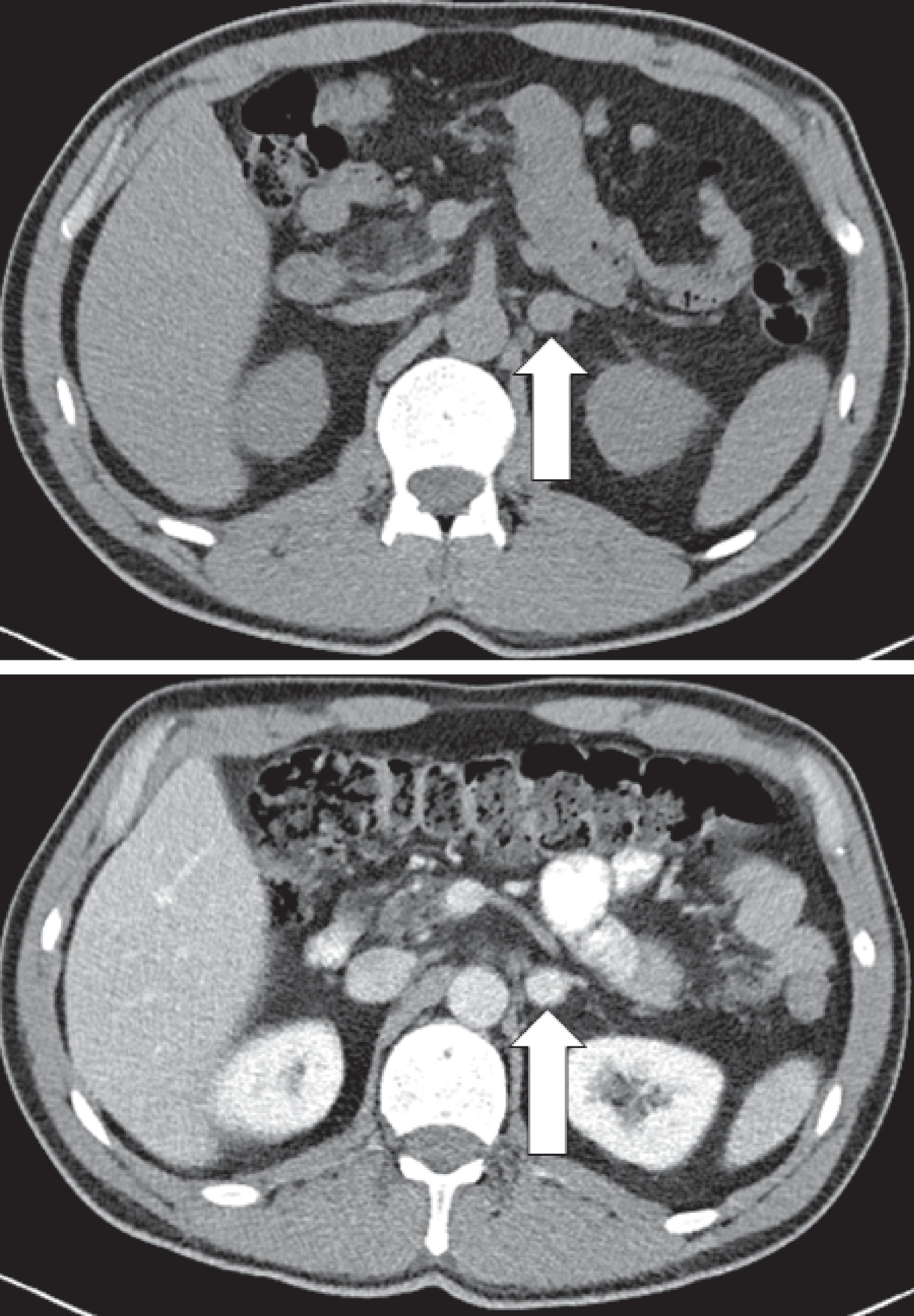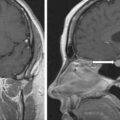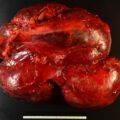All pheochromocytomas are biochemically undetectable when small—they require a sizable “factory” to become biochemically detectable. Thus publications that report that a laboratory test is 98% or 100% sensitive in detecting pheochromocytomas is simply wrong—just not possible! Computed abdominal imaging is being performed for a never-ending list of reasons. We are finding “baby” pheochromocytomas before they become symptomatic or biochemically detectable. Herein is such a case.
Case Report
The patient was a healthy 49-year-old man who had been troubled by intermittent right upper quadrant pain, which was thought to be related to gallbladder dysfunction. Abdominal computed tomography (CT) incidentally discovered a 1.6-cm lipid-poor and vascular left adrenal mass ( Fig. 36.1 ). He had no signs or symptoms of adrenal cortical or medullary dysfunction. He took no regular medications. His blood pressure was 128/78 mmHg, heart rate 74 beats per minute, and body mass index 26.51 kg/m 2 .

INVESTIGATIONS
All adrenal-related laboratory studies normal ( Table 36.1 ).
| Biochemical Test | Result | Reference Range |
| Sodium, mmol/L | 142 | 135–145 |
Potassium, mmol/L | 4.2 | 3.6–5.2 |
Creatinine, mg/dL | 1.15 | 0.74–1.35 |
am serum cortisol, mcg/dL | 16 | 7–25 |
ACTH, pg/mL | 44 | 10–60 |
Plasma metanephrine, nmol/L | <0.2 | <0.5 |
Plasma normetanephrine, nmol/L | 0.55 | <0.9 |
Aldosterone, ng/dL | 5.3 | ≤21 ng/dL |
Plasma renin activity ng/mL per hour | 2 | ≤0.6–3 |
24-Hour urine: | ||
Metanephrine, mcg | 151 | <400 |
Normetanephrine, mcg | 447 | <900 |
Norepinephrine, mcg | 61 | <80 |
Epinephrine, mcg | 7.6 | <20 |
Dopamine, mcg | 201 | <400 |
Stay updated, free articles. Join our Telegram channel

Full access? Get Clinical Tree








